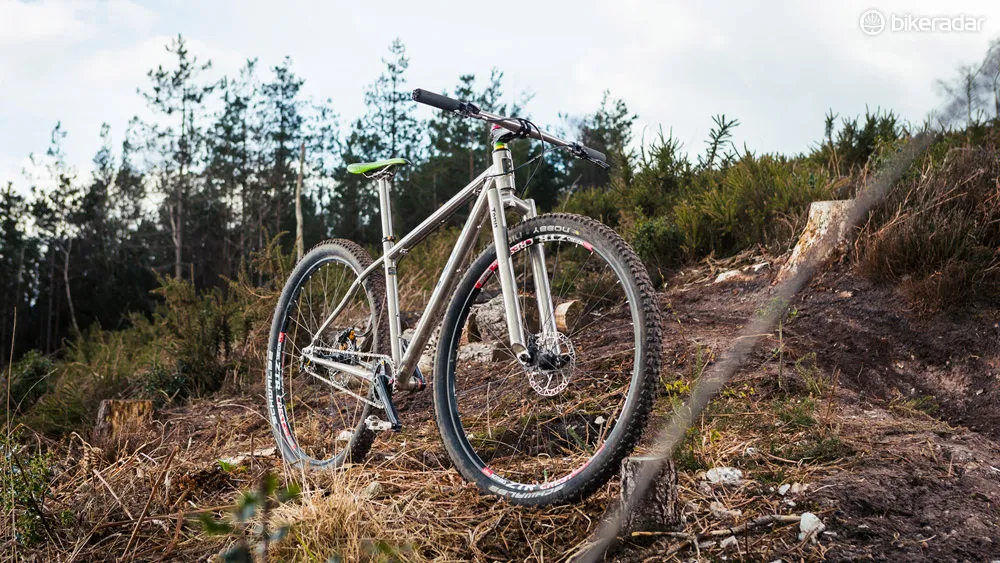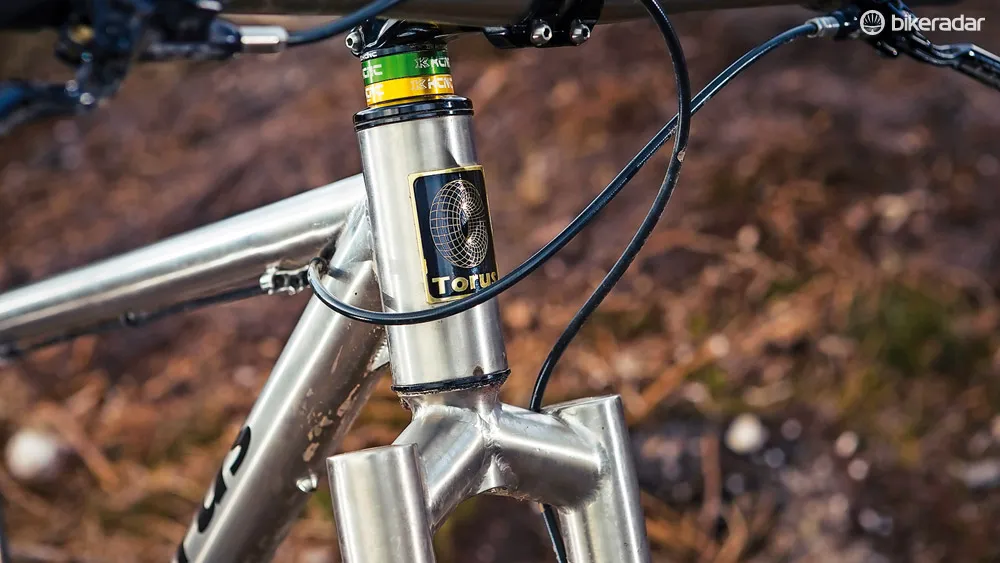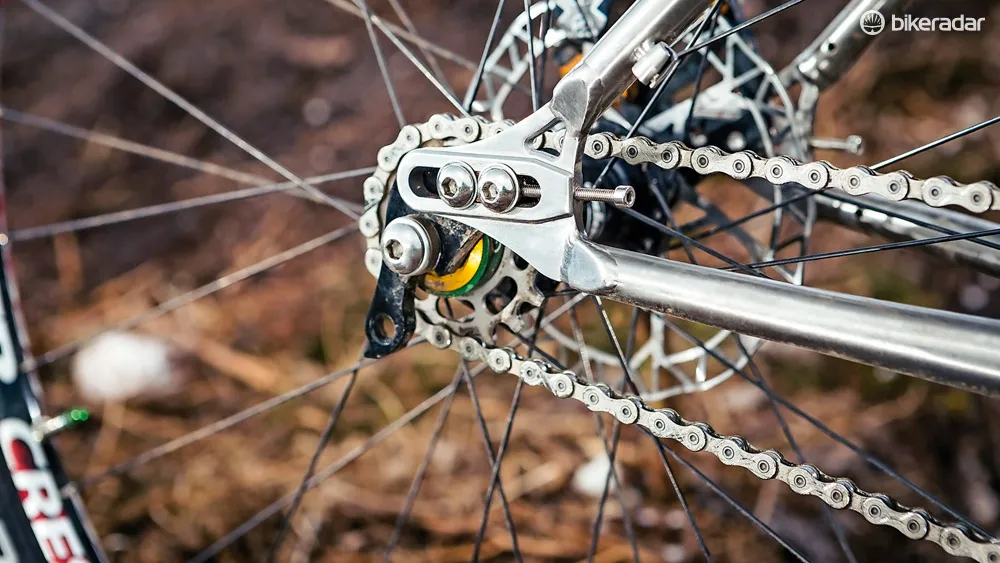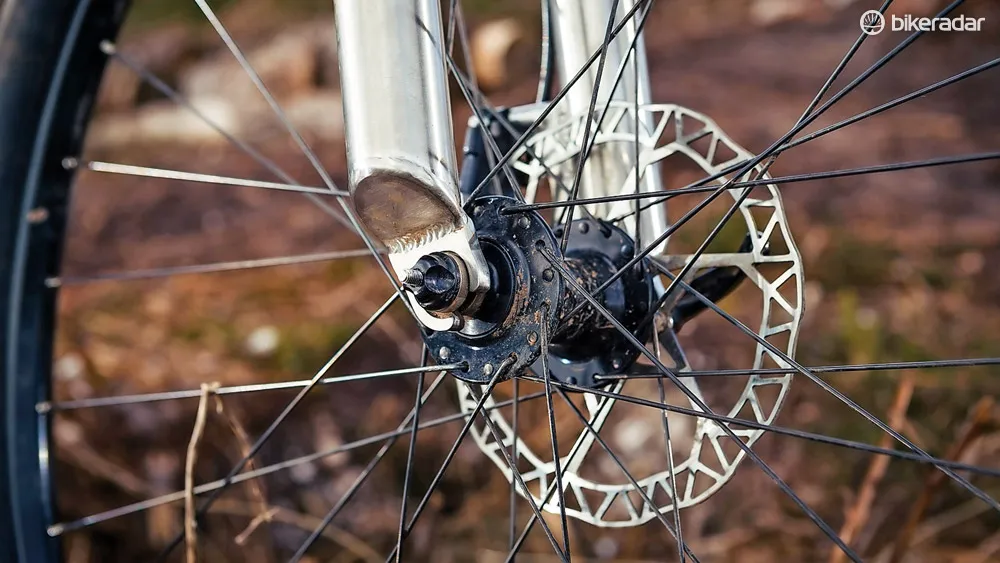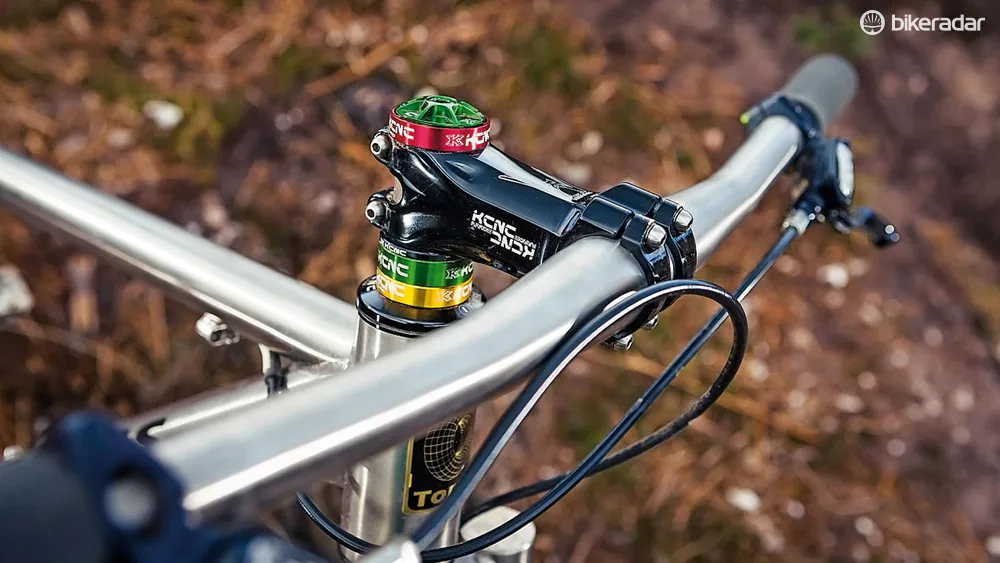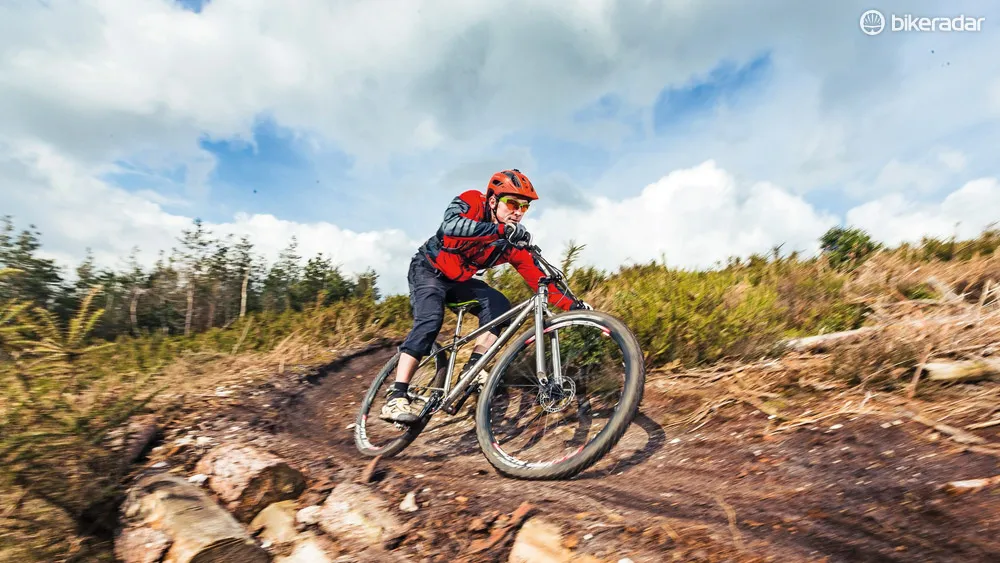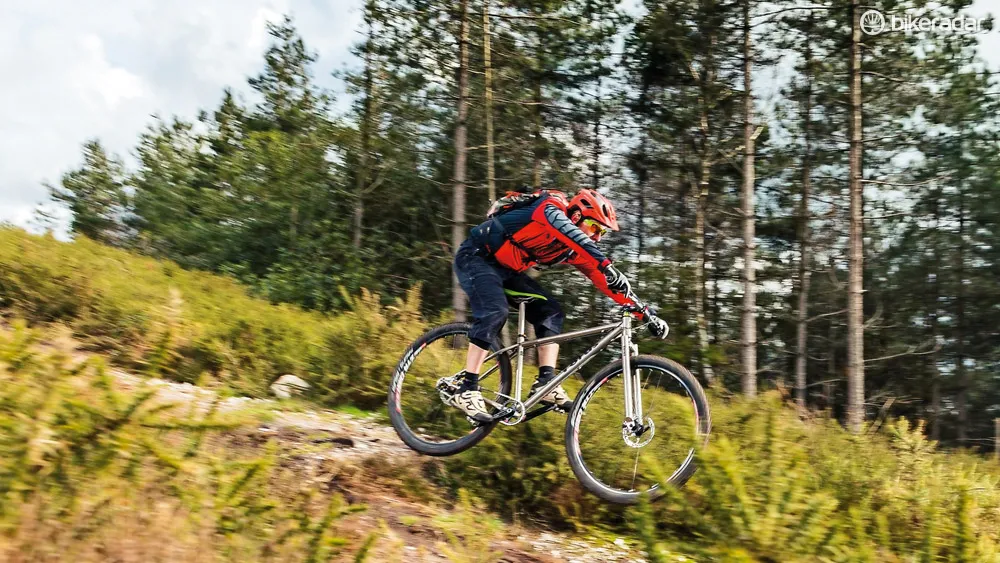It doesn’t take a genius to decipher what kind of bike the Torus Ti29 is – it’s made from titanium and it rolls on 29in wheels. It’s a quirky antidote to full suspension trail bikes with traditionally fast handling – and a surprising amount of give despite the rigid forks.
Frame and equipment: custom kitted
Burls Bicycles developed the bike with Clee Cycles, whose race team use Torus products in cross-country and marathon events. The Ti29 is a pretty racy number, the sharp handling angles feeling very much the part when you’re trying to cover as much ground as possible.
Clee Cycles built our test bike to showcase some of the lightweight kit it’s able to feature on its custom built bikes. The Russian made, plain gauge tubed frame is built to accept a 100mm suspension fork, but our test model came with a Torus TiF36 titanium rigid fork equivalent to an 80mm suspension fork.
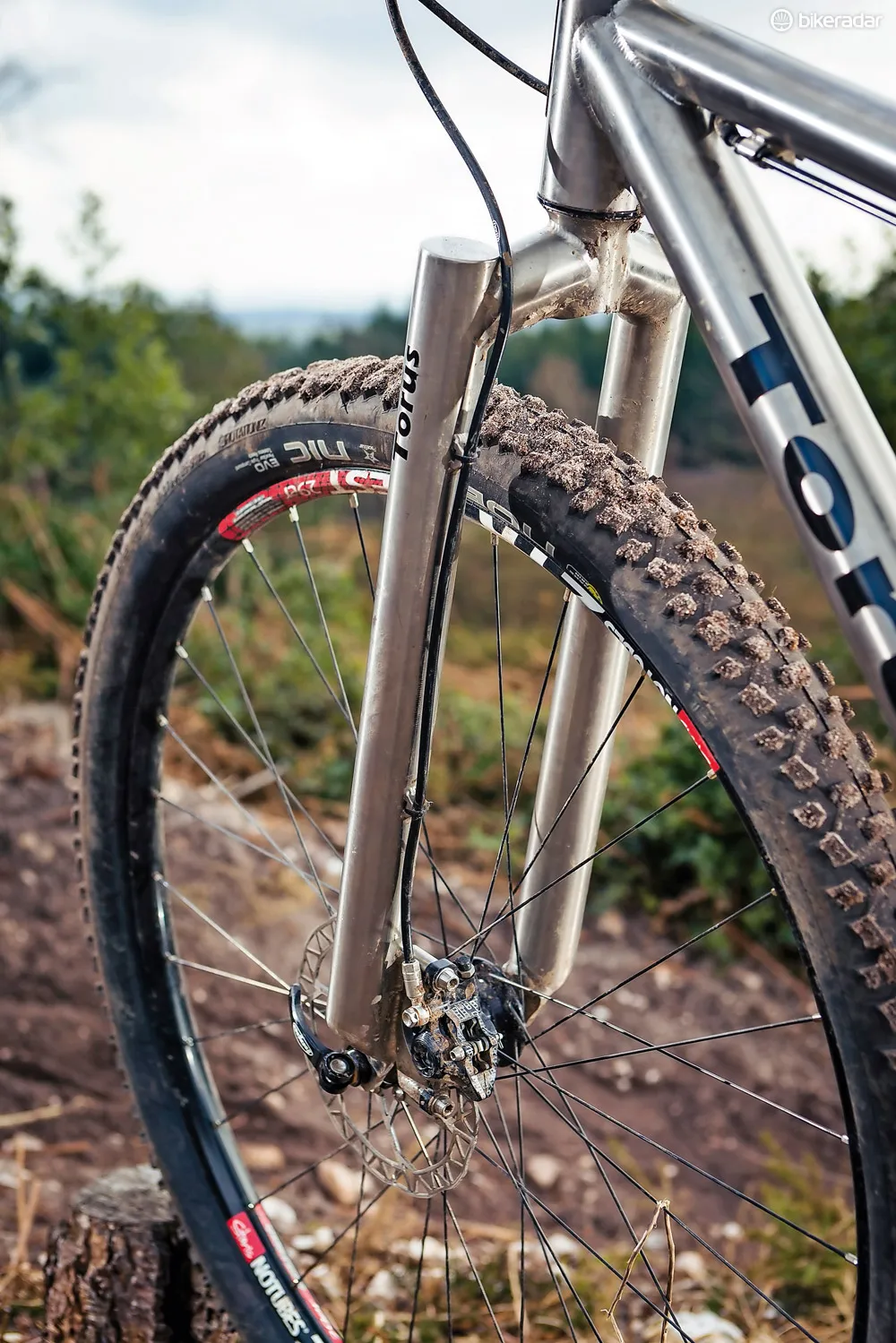
The rigid fork is made from the same plain gauge titanium tubing as the frame
Usually, rigid forks are punishing on the hands, especially those that use carbon construction, tapered steerers and bolt-thru axles, transferring every millimetre of impact to the hands. These TiF36 forks keep the same Ti-3Al-2.5V plain gauge tubing as the frame, along with old-school quick release dropouts and 1 1/8in steerer. The titanium Torus handlebars are held in place by a light KCNC aluminium stem.
The front end comes with a 44mm head tube, fitted with a semi-integrated headset for 1 1/8in steerer fork. Fitting a more conventional tapered headset would effectively lengthen the head tube, slackening the steering, and so for the Mk2 the head tube’s been shortened and stiffened, making fitting a tapered fork easier without affecting the geometry, and aiding steering precision.
The Ti29’s geometry is on the traditional cross-country side. The 72/73-degree head and seat angles are designed for fast, agile handling, while keeping your hips forward enough for efficient power transfer to the cranks. The steep head angle is countered a little by the impressively long 511mm (17in) effective top tube, which gives extra, nerves-reducing stability at higher speeds.
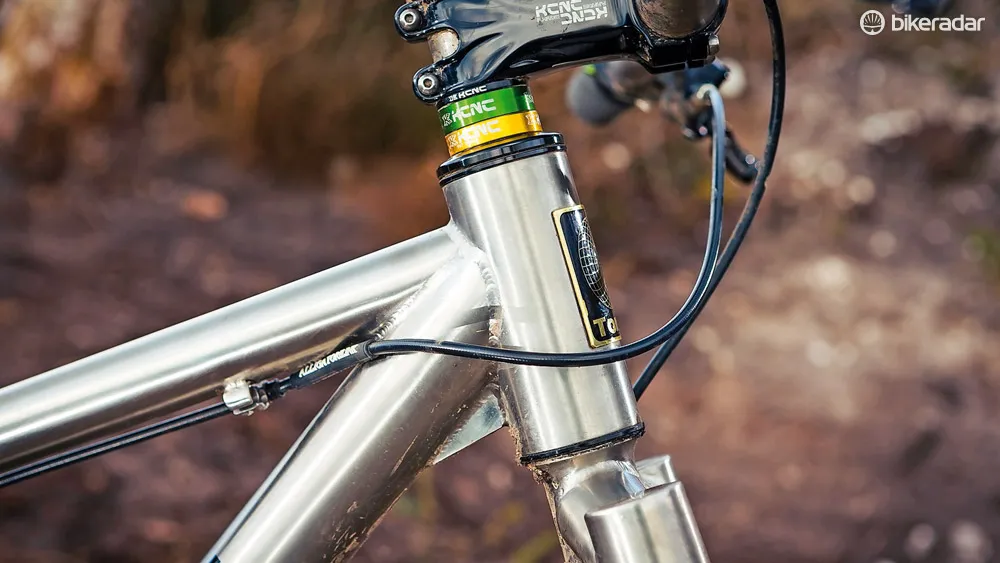
The geometry numbers are traditional cross-country: steep and lively
Our test machine came built as a singlespeed, with the sliding rear dropouts enabling us to tension the chain without running a tensioner. The driveside dropout comes with a built-in mech hanger, should you wish to add gears, and there’s a full complement of cable stops on the frame.
Clee Cycles fitted a Goldtec elliptical 33-tooth chainring, partnered with an 18-tooth sprocket on the rear. The idea behind the elliptical ring is that during the most powerful section of your pedal stroke more chain is pulled through. During the weaker section of the stroke, less chain is pulled through, effectively lowering the gear.
Whether you like them comes down to personal preference, but on a singlespeed, they can make sense – you want to maximise your power, and lowering the gear through the weaker spots of your pedal stroke makes sense. Chain tension varies through the chainring’s rotation, but we had no issues dropping the chain.
Our test bike was finished off with Hope Race Evo X2 brakes, with skinny KCNC rotors. Headset, stem spacers, seat clamp, chainring bolts and cranks also come from KCNC, while you perch upon a Velo Senso saddle.
Ride and handling: minimalist flex
There’s a lot of hyperbole that can be spouted about the ride qualities of titanium, phrases such as ‘vertically compliant’, ‘zingy’ and ‘rides like a magic carpet’ are often wheeled out. We’ll do our best to avoid those then.
Jumping on the Ti29 the most obvious thing you notice is the weight, or rather the lack of it. This minimalist build around 8kg. With the Stan’s ZTR Crest wheels running tubeless, a Schwalbe Racing Ralph on the back and Nobby Nic on the front, it doesn’t feel sluggish.
The Mk1 Ti29 we tested isn’t a hugely stiff frame, especially when compared with an aluminium or carbon race bike. This does take some of the sting out of the trail, and when combined with the 27.2mm titanium post, you’re able to remain seated for longer on rougher terrain.
The flip side is that, especially around the bottom bracket, it’s somewhat twangy, lacking the really solid feeling you get from a bike with a chunky downtube. It’s worth noting that a Mk2 frame has just become available (£1100) with a slightly ovalised down tube at the bottom bracket, increasing the weld area and theoretically the stiffness too.
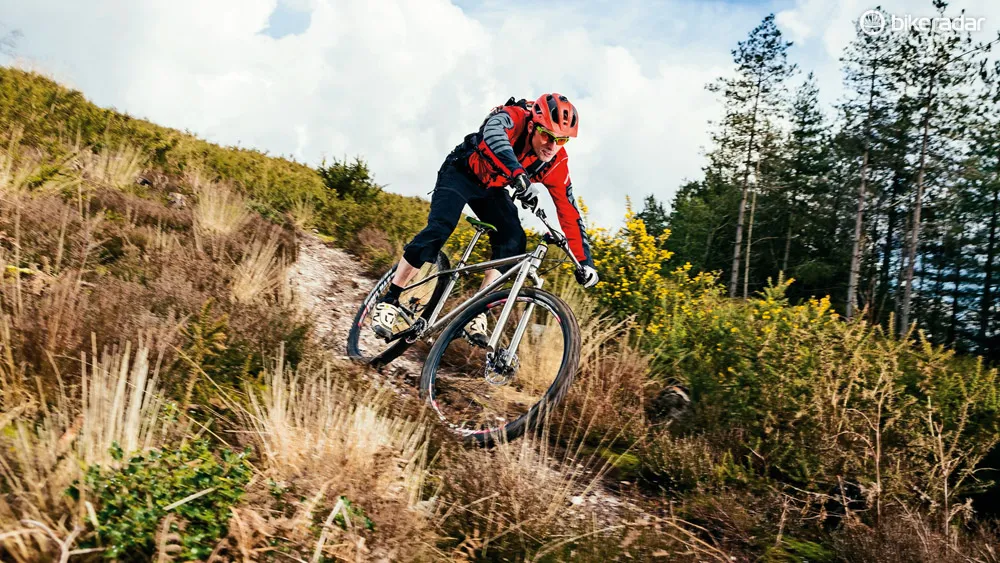
The Torus's flexy titanium fork inevitably steers slightly less directly than ones made from stiffer materials
While we’re usually complementary of stiffer forks and bars, on the rigid Torus the flex present works to its advantage. There’s not much in the way of suspension going on here, save for the little bit that’s offered by the tyres, but the vibration damping from the bars and fore-aft flutter from the fork saves your hands from a complete pummelling. Steering directness suffers over other stiffer rigid forks, but the only issues we had were when hitting off-camber sections at speed or in mid-bend compressions, where the front end felt a little too twangy and didn’t want to hold its course.
In summary, the Ti29 isn’t a bike we’d jump on for heading to steep techy trails. But if we wanted to cover miles quickly and efficiently, with an element of hardtail comfort, it’s an entertaining and decidedly different ride.
